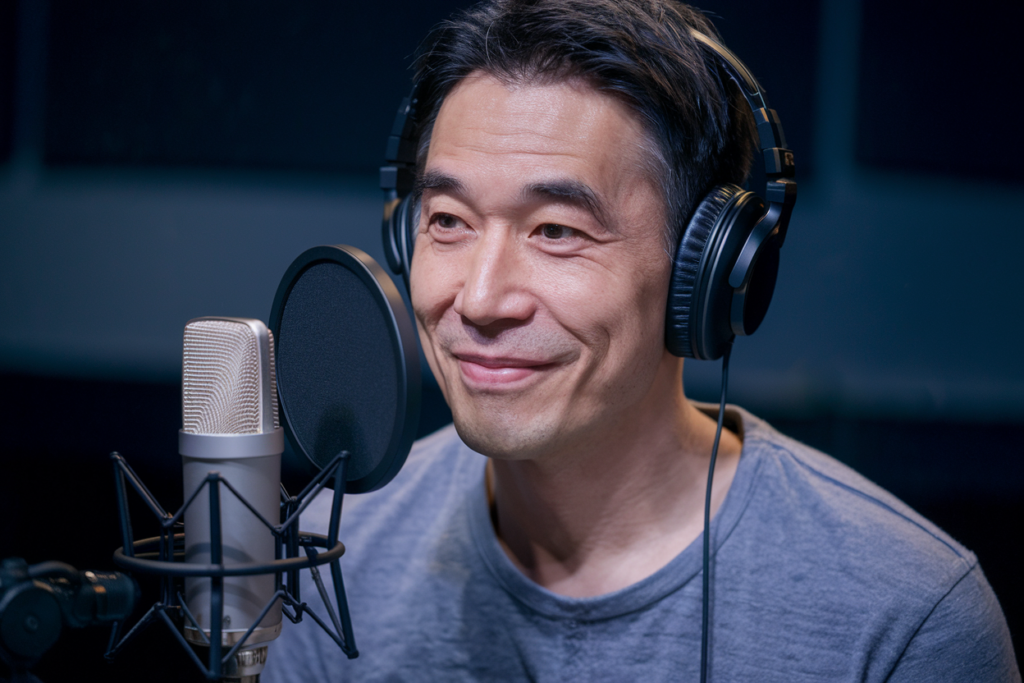Key Takeaways
- Standard vs. Regional Japanese: Standard Japanese, or “hyojungo,” serves as the foundation for communication in education and media, while regional dialects (or “ben”) reflect local cultures and identities.
- Distinct Dialects: Major regional dialects like Kansai, Hokkaido, and Kyushu have unique pronunciations, vocabulary, and grammatical structures that differ from standard Japanese.
- Cultural Reflections: Each dialect offers insights into historical influences and local traditions, enriching the overall understanding of Japan’s diverse cultural landscape.
- Pronunciation Variances: Pronunciation differences can be striking; for example, Kansai speakers often use a rising intonation that lends a lively tone to their speech.
- Vocabulary Differences: Unique words and expressions in regional dialects can enhance communication but may not be understood by speakers of standard Japanese.
- Enhancing Language Skills: Familiarizing yourself with both standard Japanese and its regional variations improves language proficiency and deepens your appreciation for Japan’s linguistic richness.
Ever wondered why Japanese sounds so different depending on where you are in Japan? The differences between standard and regional Japanese can be fascinating yet confusing. While standard Japanese is what you’ll typically hear in media or classrooms, regional dialects—known as “ben”—bring unique flavors to the language.
These variations aren’t just about accents; they reflect rich cultural histories and local identities. Understanding these differences can enhance your language skills and deepen your appreciation for Japan’s diverse regions. So whether you’re planning a trip or diving into the language, grasping these distinctions will make your experience all the more rewarding. Ready to explore?
Overview of Japanese Language Variants
Japanese features two main variants: standard Japanese and regional dialects, or “ben.” Standard Japanese, often referred to as “hyojungo,” serves as the official language used in education, media, and government. It originates mainly from the Tokyo area and maintains a uniform structure across Japan.
Regional dialects showcase unique pronunciations, vocabulary, and grammatical structures influenced by local cultures. For instance:
- Kansai Dialect: Known for its distinct intonation and expressions, it’s popular in cities like Osaka and Kyoto.
- Hokkaido Dialect: Features loanwords from Ainu culture and has variations due to its geographic isolation.
- Kyushu Dialect: Displays unique sounds that differ significantly from standard Japanese.
These dialects not only enrich the language but also reflect local identities. Understanding these differences can enhance your communication skills while deepening your appreciation for Japan’s diverse cultural landscape.
Characteristics of Standard Japanese
Standard Japanese, or “hyojungo,” serves as the foundation for communication across various regions. It’s characterized by specific phonetic structures and a formal vocabulary essential for education, media, and government.
Phonetics and Pronunciation
Standard Japanese features clear enunciation with consistent pitch patterns. The pronunciation is relatively straightforward compared to regional dialects. You’ll notice that vowels are pronounced clearly, making it easier for learners to grasp. For instance, the syllables tend to maintain a steady rhythm without significant intonation shifts. This clarity helps in voiceover work, where delivering messages accurately is crucial.
Vocabulary and Expressions
The vocabulary in standard Japanese focuses on formal expressions used widely in public settings. Words often reflect politeness and respect, which are integral to the language’s structure. You’ll find that standard phrases dominate educational materials and media broadcasts. For example, common greetings like “konnichiwa” (hello) or expressions of gratitude such as “arigatou gozaimasu” (thank you very much) are staples in everyday conversations.
Understanding these characteristics not only aids in better communication but also enhances your appreciation of the cultural nuances embedded within the language.
Regional Japanese Dialects
Regional Japanese dialects, known as “ben,” play a critical role in the linguistic landscape of Japan. These dialects not only reflect local identities but also convey unique cultural nuances that enrich communication.
Major Dialects in Japan
Japan boasts several major dialects, each with distinct characteristics:
- Kansai Dialect: Spoken in cities like Osaka and Kyoto, this dialect features a unique intonation and vocabulary. For example, “akan” means “no good,” reflecting its lively tone.
- Hokkaido Dialect: Influenced by Ainu culture, this dialect incorporates loanwords from the indigenous Ainu language. It showcases regional expressions that are unfamiliar to standard Japanese speakers.
- Kyushu Dialect: Known for its unique sounds and expressions, Kyushu’s dialect varies significantly across the island. Phrases like “bikkuri shita” (I was surprised) highlight its playful nature.
These variations enhance your understanding of Japanese culture while offering insights into regional customs and traditions. Engaging with these dialects can elevate your language skills and deepen your appreciation for Japan’s diversity.
Unique Features of Regional Dialects
Regional dialects in Japan, often called “ben,” showcase unique features that distinguish them from standard Japanese. These variations arise from historical influences and local cultures, offering a rich tapestry of language across the nation.
- Pronunciation: Each regional dialect has its own distinct pronunciation. For instance, Kansai speakers often use a rising intonation at the end of sentences, creating a lively tone that’s easily recognizable.
- Vocabulary: Local vocabularies vary significantly. Words like “akan” in Kansai mean “no good,” while Hokkaido incorporates Ainu loanwords such as “sikur” for snow, which aren’t found in standard Japanese.
- Grammar: Some regional dialects exhibit unique grammatical structures. In Kyushu, phrases may skip particles or modify verb endings differently than in standard Japanese, contributing to localized communication styles.
- Expressions and Idioms: Each area boasts expressions reflecting local customs and humor. For example, phrases like “bikkuri shita” (I was surprised) can convey emotion more vividly than their standard counterparts.
- Cultural Context: Understanding these dialect features enhances your appreciation for Japan’s diverse cultural landscape. Engaging with locals who speak their regional dialect offers insights into traditions and values that shape everyday life.
By exploring these unique characteristics of regional dialects, you deepen your understanding of not just the language but also the vibrant cultures they embody within Japan’s rich heritage.
Comparison of Standard and Regional Japanese
Standard Japanese, known as “hyojungo,” serves as the official language used in education, media, and government. In contrast, regional dialects or “ben” showcase unique pronunciations, vocabulary, and grammatical structures tied to local cultures. Understanding these differences can enrich your language skills and cultural appreciation.
Linguistic Differences
Linguistic variations between standard and regional Japanese are striking. Pronunciation differs significantly; for instance, Kansai dialect features a distinct rising intonation that gives it a lively tone. Vocabulary also varies widely; words like “akan” (no good) in Kansai or “bikkuri shita” (I was surprised) in Kyushu aren’t commonly found in standard conversations. Some dialects even show unique grammatical structures—like omitting particles or altering verb endings—which adds another layer of complexity.
Familiarity with these elements enhances communication with native speakers. It’s crucial to recognize that despite these differences, they all contribute to the rich tapestry of the Japanese language rather than detract from it.
Cultural Significance
Regional dialects reflect Japan’s diverse cultural landscape. Each variant carries historical significance and local identity that shape community interactions. For example, the Hokkaido dialect incorporates Ainu loanwords that highlight its indigenous roots, while the playful nature of Kyushu reflects its vibrant customs and traditions.
Engaging with these dialects offers insights into regional lifestyles and humor—essentially unlocking deeper levels of connection during conversations. By understanding both standard Japanese and its regional counterparts, you gain not just language proficiency but also an appreciation for the narratives woven into each word spoken across Japan’s varied cultures.
Conclusion
Embracing the differences between standard Japanese and regional dialects opens up a world of cultural richness. Each dialect you encounter adds layers of meaning to your language journey and enhances your understanding of Japan’s diverse heritage.
As you explore these variations, you’ll not only improve your communication skills but also forge deeper connections with locals. By appreciating the unique characteristics of each “ben,” you’re diving into the heart of Japan’s identity. Whether you’re traveling or learning, these insights will make your experience truly unforgettable, allowing you to engage more authentically with the people and places that define this beautiful country.
Frequently Asked Questions
What is the difference between standard Japanese and regional dialects?
Standard Japanese, or “hyojungo,” is the official language used in education and media. Regional dialects, known as “ben,” have unique pronunciations, vocabulary, and grammatical structures reflective of local cultures. These differences enrich communication and showcase Japan’s diversity.
Why are regional dialects important in Japan?
Regional dialects represent rich cultural histories and local identities. Understanding these variations enhances language skills and appreciation for Japan’s diverse cultural landscape, making it especially valuable for travelers and language learners.
Can learning about regional dialects improve my Japanese skills?
Yes! Engaging with regional dialects helps you grasp different expressions and tones, improving overall comprehension. It also provides insights into local customs and humor, enriching your understanding of the language.
What are some examples of distinct Japanese dialects?
Examples include the Kansai dialect (lively tone), Hokkaido dialect (Ainu loanwords), and Kyushu dialect (unique sounds). Each showcases specific characteristics that reflect the culture of its region.
How do regional dialects affect communication in Japan?
Dialects can lead to variations in expression, pronunciation, and grammar that may confuse non-native speakers. However, understanding these differences fosters better communication by bridging cultural gaps during conversations.
Is standard Japanese easier to learn than regional dialects?
Standard Japanese is generally considered easier due to its clear enunciation and consistent pitch patterns. However, familiarity with regional nuances enhances your overall proficiency in the language.
How do I start learning about regional Japanese dialects?
Begin by listening to native speakers from different regions or watching shows set in those areas. Books on colloquial phrases or taking classes focused on specific dialects can also be beneficial.
Are there any resources for studying both standard Japanese and its dialects?
Yes! Language apps like Duolingo or textbooks specifically covering “ben” can help you learn both forms effectively. Online platforms often offer courses focusing on particular regions’ languages too.







